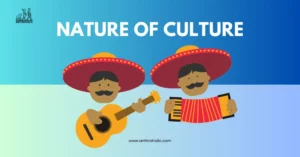AI Answer Evaluation Platform Live Now. Try Free Answer Evaluation Now
Dominant Caste
Dominant caste is a unique concept in the Indian social structure, representing the ascendant caste group that exercises significant control and influence within a specific region [1]. It denotes the class of people who have successfully combined both ritual status and secular power to command resources, privileges, and authority [2].

Historical Background
Emergence of the Caste System
The origins of the caste system can be traced back to the Vedic period, where the fourfold division (Varna system) emerged [3]. This initial division has evolved into thousands of Jatis (castes), marked by social stratification and occupation-based classification.
Varna System
The Varna system represents the ancient classification of Indian society, predominantly defined by the occupational roles that individuals played. It is a fourfold division, including:
- Brahmins: Priests, scholars, and teachers, responsible for religious rites, teaching, and maintaining sacred knowledge.
- Kshatriyas: Warriors and rulers, entrusted with protecting the land and administering justice.
- Vaishyas: Merchants, farmers, and artisans, responsible for trade, agriculture, and commerce.
- Shudras: Service providers and laborers, tasked with supporting the other three Varnas in their functions.
This classification was initially flexible and based on occupation rather than birth, but over time it became more rigid and hereditary.
Jati System
While the Varna system categorizes society into broad occupational groups, the Jati system refers to the thousands of distinct castes and sub-castes within these groups. Jatis are often regionally specific and linked to particular occupations. Unlike Varnas, Jatis are primarily endogamous, meaning marriage occurs within the Jati, and social interaction rules are stricter.
Table 2: Differences Between Varna and Jati
| Aspect | Varna | Jati |
|---|---|---|
| Classification | 4 Main Groups | Thousands of Castes |
| Basis | Occupation | Birth & Occupation |
| Flexibility | Originally Flexible | More Rigid |
| Social Interaction | Less Strict | Strict Endogamy |
Dominant Caste Concept
M.N. Srinivas, an eminent Indian sociologist, introduced the concept of the “Dominant Caste” in the 1950s. He defined it based on the size of the population, economic strength, political power, and ritual status [2].
Characteristics of Dominant Caste
Numerical Strength
Dominant castes typically comprise a significant portion of the local population, allowing them to exercise substantial influence in the social and political spheres.
Economic Power
Dominant castes often control vital economic resources, such as land and wealth, enabling them to exert considerable influence over others.
Political Clout
With control over the local administrative bodies, dominant castes often exercise significant political influence, sometimes transcending regional politics.
Ritual Status
Though not always at the top of the ritual hierarchy, dominant castes often maintain a higher status, which enables them to assert their authority within the community.
The Social Dynamics
Impact on Lower Castes
The dominant caste’s influence often permeates the lives of those in the lower strata of society, leading to social constraints and reduced mobility for the non-dominant castes.
Table 1: Comparison of Dominant and Non-Dominant Castes
| Factor | Dominant Caste | Non-Dominant Caste |
|---|---|---|
| Population Size | High | Low |
| Economic Power | Strong | Weak |
| Political Power | Influential | Marginal |
| Ritual Status | Higher | Lower |
Case Studies
The Jats in Haryana
The Jats’ status as a dominant caste in Haryana illustrates the combination of numerical strength, economic power, and political influence that defines this concept.
The Brahmins in Uttar Pradesh
In contrast to the Jats, the Brahmins, though not numerically dominant, maintain their status through ritual superiority and political connections.
Contemporary Challenges
The dominant caste system has led to social friction, inequality, and contemporary legal challenges, such as the implementation of reservation policies. These policies aim to uplift the non-dominant castes but often lead to opposition and conflict.
Conclusion
The concept of the “Dominant Caste” is intertwined with India’s social fabric, reflecting a complex mixture of historical, cultural, and socio-economic factors. Understanding this phenomenon requires an anthropological lens that considers not just the social hierarchy but also the dynamic interplay between different elements of society.
References
[1] Dumont, L. (1980). Homo Hierarchicus: The Caste System and Its Implications. University of Chicago Press.
[2] Srinivas, M. N. (1959). The Dominant Caste in Rampura. American Anthropologist, 61(1), 1-16.
[3] Sharma, R. S. (2005). Perspectives on the Origin of the Indian Caste System. Oxford University Press.
[4] Gupta, D. (2000). Interrogating Caste: Understanding Hierarchy and Difference in Indian Society. Penguin Books India.
[5] Béteille, A. (1996). Caste, Class and Power: Changing Patterns of Stratification in a Tanjore Village. University of California Press.




